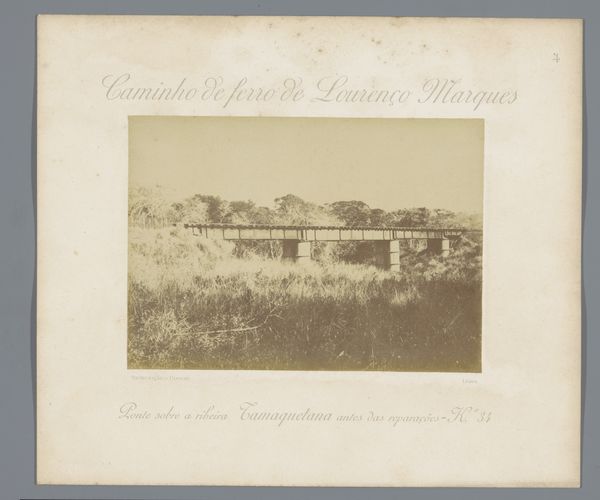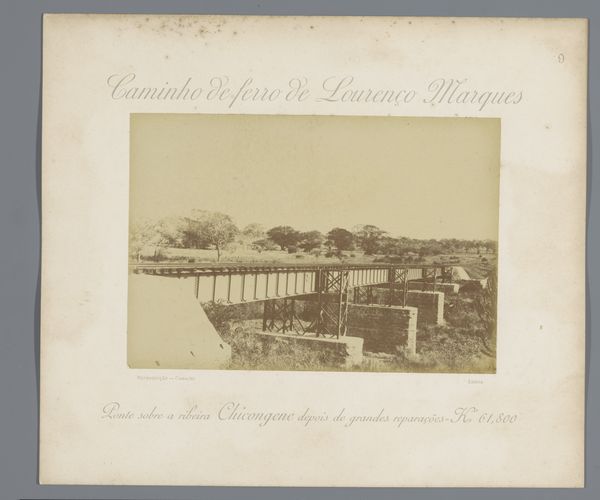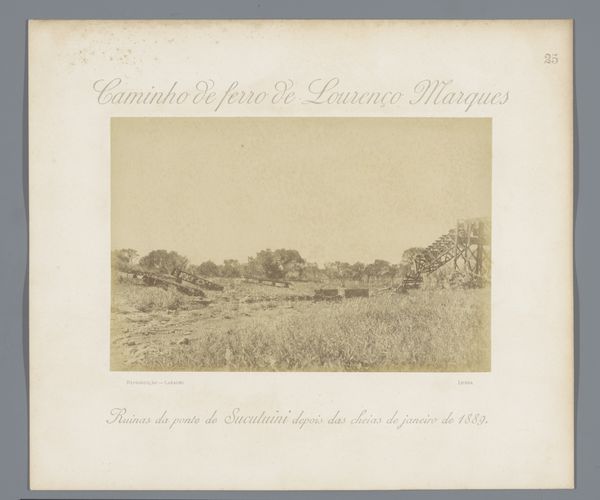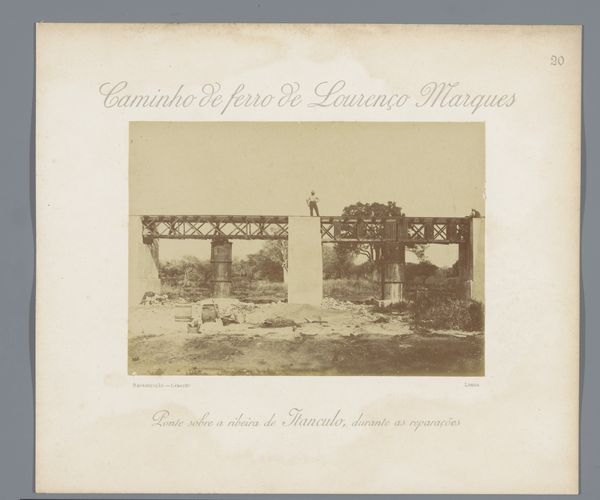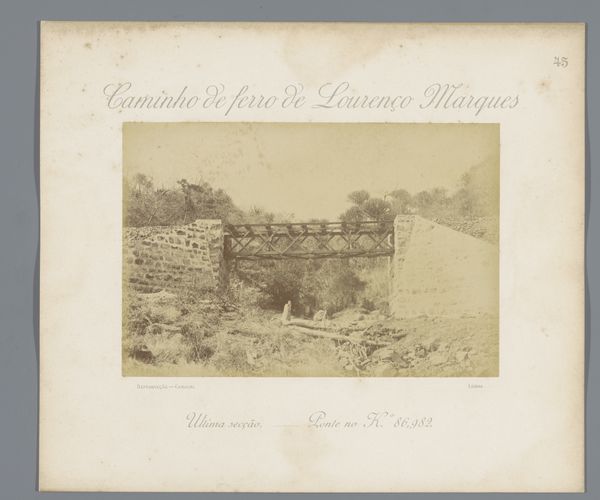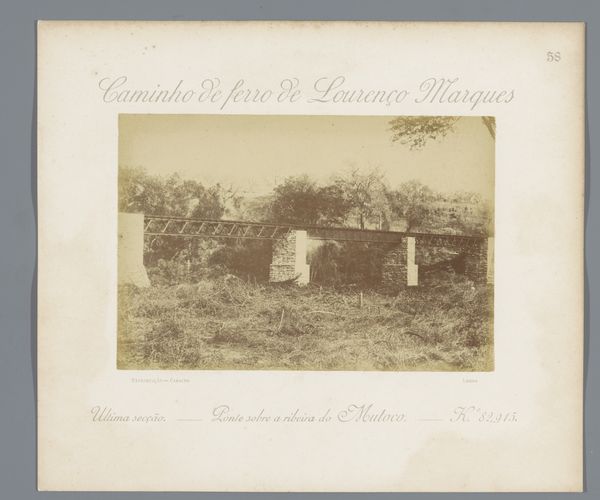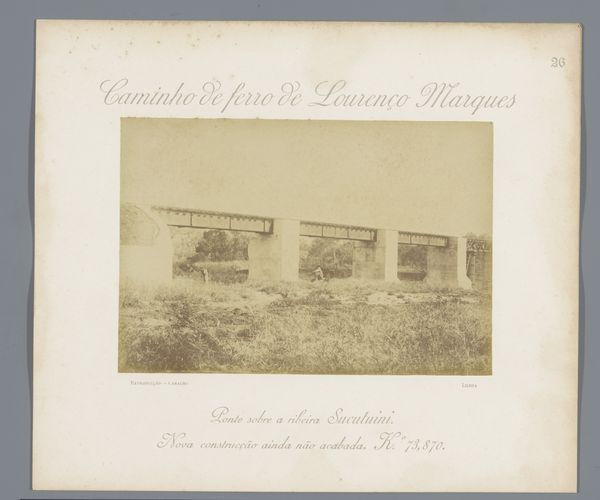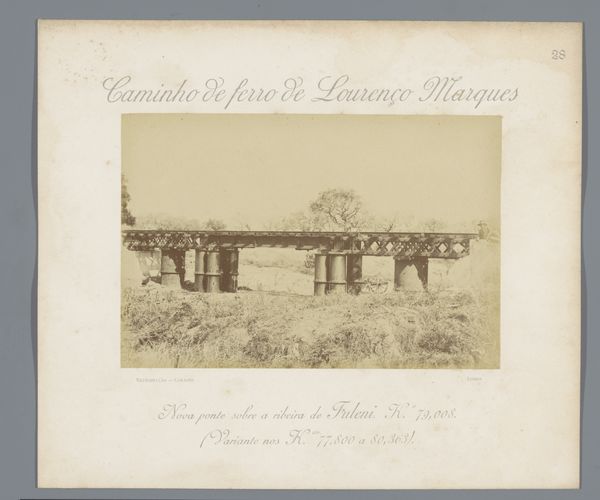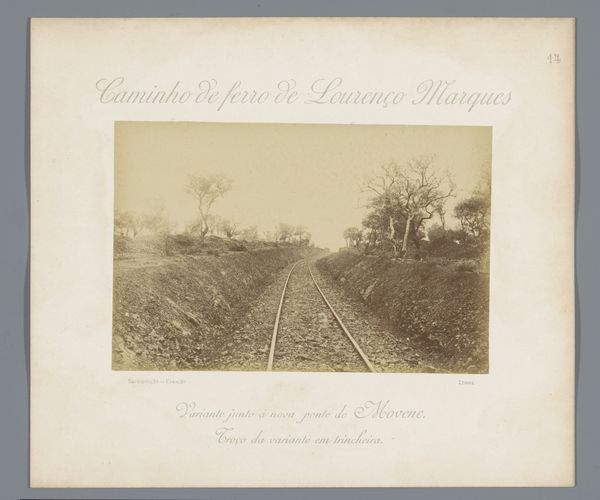
photography
#
landscape
#
photography
Dimensions: height 113 mm, width 165 mm
Copyright: Rijks Museum: Open Domain
Editor: This landscape photograph from circa 1886 by Manuel Romão Pereira captures a train bridge in Mozambique. There’s a distinct stillness to it, a quiet moment preserved. What stands out to you about this image? Curator: The photograph offers a fascinating glimpse into the public role of art and politics of imagery during the late 19th century in Mozambique, then a Portuguese colony. It seems less like an artistic statement and more like a document tied to colonial infrastructure. How do you interpret the inscription "Caminho de ferro de Lourenço Marques?" Editor: It translates to "Lourenço Marques Railway." The description at the bottom says it's a small bridge constructed to help with water drainage during repairs on the railway at kilometer 72.200. So it’s very practical, serving a colonial interest? Curator: Precisely! Notice the absence of any critical perspective or focus on local Mozambican experience. The bridge and railway symbolize Portuguese influence and resource control. Think about how such images promoted colonial “progress” while omitting the social and environmental consequences. Does that change how you see the composition? Editor: Definitely. Initially, I saw a serene landscape, but now it feels more like a statement of control, part of a broader project of dominance. It’s not just a bridge, it's a piece of infrastructure tied to resource extraction. Curator: It prompts us to consider whose perspectives are highlighted, and whose are systematically erased within historical documentation. This approach to historical landscape challenges us to interrogate photographs beyond surface aesthetics and into deeper social meanings. What is your view? Editor: Absolutely. I’ve learnt to look at old landscape photography with a fresh understanding, one that reflects a story that it’s telling about a particular society at a given historical moment.
Comments
No comments
Be the first to comment and join the conversation on the ultimate creative platform.
